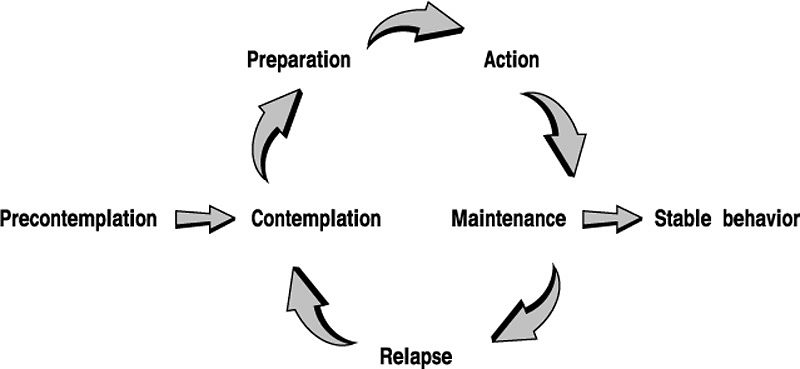Kyle Kercher MS, ACSM-EP, ACSM-CPT, PMP, HWC |
July
23, 2019

Key Points:
1. Your client will inevitably experience injuries outside of the training environment. As a health and fitness practitioner you will want to proactively develop an approach to helping clients through this challenging time, while staying within your scope of practice.
2. If possible, strive to maintain their training routine frequency or consistency. Behavior change is very difficult so try to maintain established behavior patterns when possible.
3. By adjusting and substituting exercises with specific movement patterns and modifications in mind, practitioners can assist clients to maintain or even continue to make health and fitness gains through injuries.
Within our fitness centers, sports complexes, and strength and conditioning programs there are bound to be countless members coming through the doors each day with a broad range of injuries and other physical limitations. Despite these physical challenges, most members are likely able to perform some form of training program. Although it is extremely important for health and fitness practitioners to stay within their scope of practice, strength and conditioning coaches and personal trainers alike can play an integral part in helping clients establish and maintain healthy routines.
One of the clients at our 8,000 member medical fitness center recently broke her foot stepping off the edge of a sidewalk at her workplace. This resulted in her being placed in a fixed ankle boot and utilizing one of those half-kneeling steerable scooters we’ve seen people zooming around on. When her injury occurred she was in the middle of an 8-week training cycle in our small group strength training program. Among other challenges, this left her with two choices:
- Continue her training program with modifications and limitations as lined out by her physical and occupational therapists or
- Take a complete break from exercise while her ankle healed. After that she could do her best to slowly ease her way back into physical activity and reintroduce the behavioral choice of going to the gym three times per week.
For her, her occupational therapist, and our strength and conditioning coaches the choice was clear. However, it’s not as clear as it could be in many injury situations. In my experience as a personal trainer, wellness coach, and strength and conditioning coach, I’ve seen countless people experience injuries and consequently discontinue their entire physical activity routine when they were cleared for some form of activity. Many of these people (assuming they’re cleared by a physical therapist or other health care provider for some form of activity) could have benefited from performing a modified training program.
As health and fitness practitioners, we can support our clients through injuries by providing modified and safe training programs that focus on strengthening other areas while physical therapists and other providers focus on treatment of injuries. It is a beautiful thing when the health and fitness practitioner and physical or occupational therapist work together to help clients maintain some form of their current stage of change, even if it is at a decreased level. Maintaining the behavioral pattern and support system (i.e., relatedness) can be a powerful influence on sustaining behavior.
It is a beautiful thing when the health and fitness practitioner and physical or occupational therapist work together to help clients maintain some form of their current stage of change, even if it is at a decreased level.

Transtheoretical model of behavior change.
Reprinted with permission from Pekmezi, Dori; Barbera, Brooke; Marcus, Bess H. USING THE TRANSTHEORETICAL MODEL TO PROMOTE PHYSICAL ACTIVITY ACSM's Health & Fitness Journal 14(4):8-13, July-August 2010. https://journals.lww.com/acsm-healthfitness/pages/default.aspx
There is a strong chance that clients will have an easier time trying to maintain their stage of change than regressing back stages and then trying to return to stages like action and maintenance.
How to modify programs for clients with physical limitations
Well-designed strength and conditioning programs lend themselves to modifications and adjustments. Modifications may be based on many factors including but not limited to: programming structure (i.e., muscular power or strength-based exercise), movement patterns involved, weight bearing or not (body position), joint angles utilized, muscular imbalances, etc. You might consider asking yourself the following questions when trying to assist clients in need of modifications:
- Based on the client’s program structure, what type of exercise needs to be modified/replaced?
- What type of movement pattern is limited?
- What type of exercises can they do without experiencing pain?
- As in the ankle example, can these exercises be done in a non-weight bearing way?
- What joint angles are limited or need to be adjusted?
When health and fitness professionals start asking these types of questions, we discover there may still be a great number of exercises the client can continue to do. This may allow them to maintain their stage of change related to physical activity and may be a better option than stopping exercise completely (depending on the type of injury, the diagnosis and the prescription from an appropriate healthcare provider).
Author:
 Kyle Kercher
Kyle Kercher currently leads a program called
Competitive Edge at The Summit Medical Fitness Center in Kalispell, Montana which consists of adult barbell training, a youth training academy, athletic training services and general fitness. He is an ACSM-EP, ACSM-CPT, and Wellcoaches HWC. Kyle graduated from California University of Pennsylvania with his Masters in Exercise Science with a focus in Sport Psychology.
More from Kyle

5 Things You Need to Know | Starting a Strength Program in your Facility